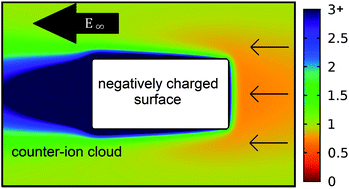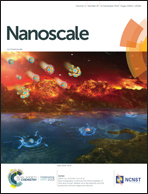Biphasic signals during nanopore translocation of DNA and nanoparticles due to strong ion cloud deformation
Abstract
We report a theory for biphasic ionic current signals during DNA and nanoparticle translocation through a solid-state nanopore that produces scaling results consistent with those of finite element simulations (FEM), molecular dynamics (MD) simulations and experiments. For standard nanopores designed for potential rapid sequencing applications, the electric field is enhanced by orders of magnitude due to field focusing and can severely deform the ion-cloud around the charged DNA. Highly fore-aft asymmetric space charge distribution leads to a universal quasi-steady comet-like structure with a long tail. In contrast to previous biphasic theories, the charge density and length of the tail, which are responsible for the negative resistive pulse, are shown to depend sensitively on the dimensionless applied field, the Peclet number Pe, with a ∓1 scaling, due to a balance between tangential migration and normal diffusion. An optimum Pe is predicted where the negative pulse has the maximum amplitude.



 Please wait while we load your content...
Please wait while we load your content...
